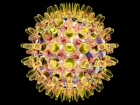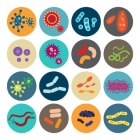Press monitoring
Pufferfish-inspired pill could keep a long-term eye on your gastric health
30.1.2019 | Press monitoring
MIT researchers have developed an ingestible pill that swells up to the size of a ping-pong ball upon reaching the stomach, allowing it to remain in the body and take measurements from within – for weeks at a time. The pill's creators hope that it could be used for a multitude of purposes, from tracking stomach pH levels to observing the growth...
Genetically modified virus shown able to kill tumors in mice with retinoblastoma
28.1.2019 | Press monitoring
An international team of researchers reports that modifying an adenovirus a certain way made it an effective tumor killer in mice with retinoblastoma. In their paper published in the journal Science Translational Medicine, the researchers describe modifying the virus and testing its effectiveness in treating retinoblastoma. Retinoblastoma, as its...
Not all poo is created equal: Scientists discover super donors for fecal transplants
25.1.2019 | Press monitoring
A new study, led by researchers from the University of Auckland, has described the phenomenon of super donors, people who contribute stool samples for use in trials whose poop seems to be significantly more effective in leading to clinical improvements for fecal transplant subjects. Despite a long history of anecdotal use, the science behind...
CRISPR gene-edited monkeys cloned in China
23.1.2019 | Press monitoring
New research out of China has confirmed the birth of five gene-edited monkey clones. Two recently published papers describe how a CRISPR-gene-edited long-tailed macaque has been successfully cloned, demonstrating the first time in the world a gene-edited monkey has been effectively cloned. The scientists first created a donor monkey using the...
Soil bacteria found to produce mosquito repelling chemical stronger than DEET
21.1.2019 | Press monitoring
A trio of researchers at the University of Wisconsin has discovered that a common soil bacterium produces a chemical that is more effective in repelling mosquitoes than DEET. In their paper published in the journal Science Advances, Mayur Kajla, Gregory Barrett-Wilt and Susan Paskewitz describe their search for the chemical made by the bacteria...
Why do Hydra end up with just a single head?
18.1.2019 | Press monitoring
Often considered immortal, the freshwater Hydra can regenerate any part of its body, a trait discovered by the Geneva naturalist Abraham Trembley nearly 300 years ago. Any fragment of its body containing a few thousands cells can regenerate the entire animal The one-centimeter polyp has a developmental organizer center located at the head level,...
Scientists grow perfect human blood vessels in a petri dish
16.1.2019 | Press monitoring
Scientists have managed to grow perfect human blood vessels as organoids in a petri dish for the first time. The breakthrough engineering technology, outlined in a new study published today in Nature, dramatically advances research of vascular diseases like diabetes, identifying a key pathway to potentially prevent changes to blood vessels - a...
Cartilage could be key to safe structural batteries
14.1.2019 | Press monitoring
Your knees and your smartphone battery have some surprisingly similar needs, a University of Michigan professor has discovered, and that new insight has led to a "structural battery" prototype that incorporates a cartilage-like material to make the batteries highly durable and easy to shape. The idea behind structural batteries is to store...
Gene-editing tool CRISPR repurposed to develop better antibiotics
11.1.2019 | Press monitoring
A University of Wisconsin-Madison researcher and his collaborators at the University of California, San Francisco have repurposed the gene-editing tool CRISPR to study which genes are targeted by particular antibiotics, providing clues on how to improve existing antibiotics or develop new ones. Resistance to current antibiotics by disease-causing...
Turbocharger for the cell machinery
9.1.2019 | Press monitoring
Researchers of the University of Bern have discovered a new molecular regulatory mechanism in unicellular parasites which has never before been observed. RNA fragments do not act as brakes in the cell apparatus, but on the contrary as "stimulants": they boost protein production after periods of stress. Today, it is assumed that in many living...
































